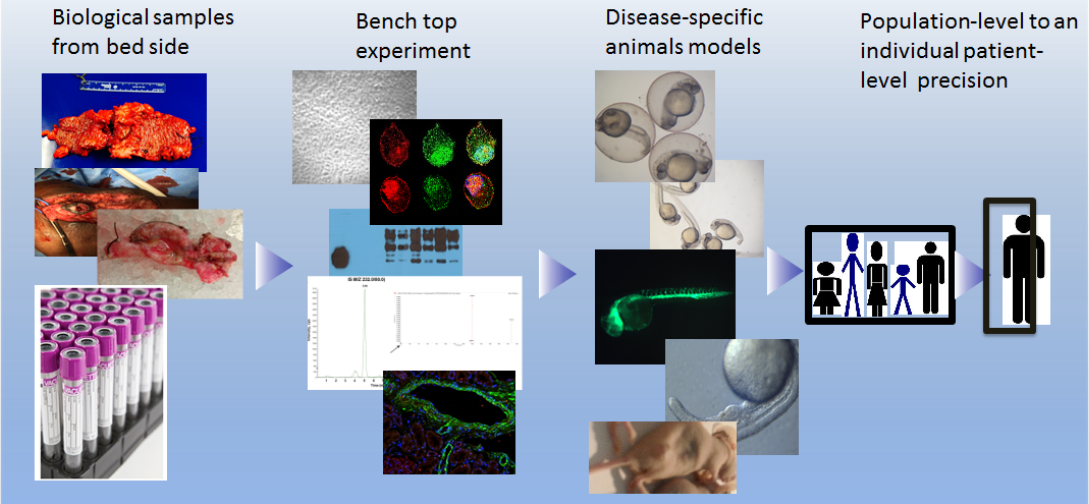The Chitalia lab focuses on understanding the post-translational modifications of proteins and their role in kidney failure and cancer-related vascular pathologies. The lab harnesses the power of research tools spanning various cellular and molecular biological models, animal models (zebrafish and mice), mass spectrometry, genomic analysis, computational methods, and machine learning techniques to develop a highly integrative platform to understand the molecular mechanisms that drive disease pathogenesis. The lab intends to gain a deeper understanding of pathobiology to help develop a theranostic platform in future.
Five selected publications:
1. Chitalia VC et al. Matrix-embedded cells are protected from the uremic mileu. Nephrology Dialysis and Transplantation, 2011. PMID: 21795755
2. Chitalia VC et al. Uremic serum and solutes increase post-vascular interventional thrombotic risk through altered stability of smooth muscle cell tissue factor. Circulation, 2013. PMID: 23269489
3. Shivanna S et al. The aryl hydrocarbon receptor is a critical regulator of tissue factor stability and antithrombotic target in uremia. Journal of the American Society of Nephrology, 2016. PMID: 26019318
4. Shashar M et al. Targeting STUB1-tissue factor axis normalizes hyerthrombotic uremic phenotype without increasing bleeding risk. Science Translational Medicine, 2017. PMID 29167396
5. Kolachalma VB et al. Uremic solute-aryl-hydrocarbon receptor-tissue factor axis associates with thrombosis and vascular injury in humans. Journal of the American Society of Nephrology, 2018. PMID: 29343519
